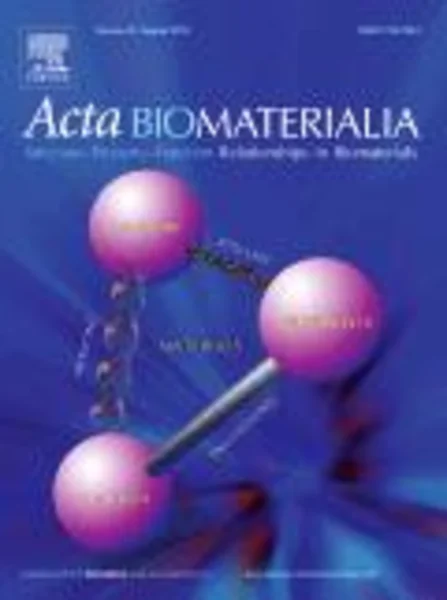-
regulation of enamel hardness by its crystallographic dimensions
جزئیات بیشتر مقاله- تاریخ ارائه: 1392/01/01
- تاریخ انتشار در تی پی بین: 1392/01/01
- تعداد بازدید: 854
- تعداد پرسش و پاسخ ها: 0
- شماره تماس دبیرخانه رویداد: -
enamel is a composite biomaterial comprising a minor organic matrix (∼2%) and a hierarchically organized inorganic ultrastructure (∼96–98%). surprisingly, to date there is no available information in the literature regarding the possible role of the enamel ultrastructure on the nanoscale level in tooth macroscopic properties. understanding this relationship is of especial interest for restorative purposes in dentistry. accordingly, this study was designed to investigate how enamel nanocrystals regulate its hardness. we performed microindentation analysis on 100 extracted human teeth. the tooth enamel hardness was quantified and correlated with changes in enamel chemical composition and crystallographic dimensions obtained from fourier transform infrared spectroscopy and x-ray diffraction, respectively. enamel hardness was not related to the variability in organic content, but was associated with the size of apatite crystals along the c-axis. this association followed the hall–petch model for polycrystalline materials, indicating that the optimal size of apatite nanocrystals (larger than the critical size) provides enamel with the greatest hardness, which enables teeth to survive the heavy wear over a human lifetime.
مقالات جدیدترین رویدادها
-
استفاده از تحلیل اهمیت-عملکرد در ارائه الگوی مدیریت خلاقیت سازمانی و ارائه راهکار جهت بهبود
-
بررسی تاثیر ارزش وجوه نقد مازاد بر ساختار سرمایه شرکت های پذیرفته شده در بورس اوراق بهادار تهران
-
بررسی تأثیر سطح افشای ریسک بر قرارداد بدهی شرکت های پذیرفته شده در بورس اوراق بهادار تهران
-
بررسی تأثیر رتبه بندی اعتباری مبتنی بر مدل امتیاز بازار نوظهور بر نقد شوندگی سهام با تأکید بر خصوصی سازی شرکت ها
-
تأثیر آمیخته بازاریابی پوشاک ایرانی بر تصویر ذهنی مشتری پوشاک ایرانی (هاکوپیان)
-
معماری سنتی و هنر گرافیک محیطی
-
مطالعه آزمایشگاهی قابلیت تزریق پذیری آبرفت c تهران به منظور تونلسازی
-
جایگاه و وظایف دولت ها در فرایند توسعه فناوری
-
انحلال کنسانتره اسفالریت در حضور آب اکسیژنه
-
ارزش اقتصادی صفات تولید مثل و ماندگاری گاوهای آمیخته استان لرستان
مقالات جدیدترین ژورنال ها
-
مدیریت و بررسی افسردگی دانش آموزان دختر مقطع متوسطه دوم در دروان کرونا در شهرستان دزفول
-
مدیریت و بررسی خرد سیاسی در اندیشه ی فردوسی در ادب ایران
-
واکاوی و مدیریت توصیفی قلمدان(جاکلیدی)ضریح در موزه آستان قدس رضوی
-
بررسی تاثیر خلاقیت، دانش و انگیزه کارکنان بر پیشنهادات نوآورانه کارکنان ( مورد مطالعه: هتل های 3 و 4 ستاره استان کرمان)
-
بررسی تاثیر کیفیت سیستم های اطلاعاتی بر تصمیم گیری موفق در شرکتهای تولیدی استان اصفهان (مورد مطالعه: مدیران شرکتهای تولیدی استان اصفهان)
-
بررسی مقایسه ای بین اعتیاد به فضاهای مجازی و سبک های هویت با رشد اجتماعی دانش آموزان متوسطه دوره دوم
-
بررسی حقوق اقلیت های مذهبی در فقه مذاهب
-
نقش فضای باز، طبیعت و منظر در ارتقا کیفیت آموزشی مدارس (تحلیل کارکردی نظریه بازسازی تمرکز ذهنی در معماری منظر)
-
بررسی رابطه بین سوادرسانه ای، خودمراقبتی و سلامت روان در بین دانش آموزان متوسطه دوم هنرستان های فنی و حرفه ای و کاردانش
-
بررسی عوامل موثر بر قصد خرید لوکس مشتریان با استفاده از روش داده کاوی ( مطالعه موردی حوزه پوشاک )




سوال خود را در مورد این مقاله مطرح نمایید :